Völuspá – Norse Prophecy Of The Völva, A Feared Shaman By The Vikings
Ellen Lloyd - AncientPages.com - The Völuspá, the first poem in the Codex Regius of the Poetic Edda, is one of the most outstanding literary achievements in the Norse world.
This fascinating poem reveals Norse prophecies told by a Völva, a mighty female shaman and seer in Norse mythology.
God Odin meets the Völva - Credit: Illustration by Carl Emil Doepler, 1905
Norse Prophecies Revealed
At the poem's beginning, the Völva is dead and must be restored to life. God Odin orders the Völva to rise from the grave. She tells God Odin what awaits him, the other gods, humanity, and all living beings.
The Völva describes the world's creation, the catastrophic visions of the final battle with the giants, and the inevitable destruction of the world, known as Ragnarok. She also tells what humans and gods can expect after Doomsday.
The poem begins with the Völva demanding silence from the Sons of Heimdallr.
"For silence, I pray all sacred children,
great and small, sons of Heimdall.
they will that I Valfather's deeds recount,
men's ancient saws, those that I best remember."
In Norse mythology, God Heimdallr possessed extraordinary powers and was a guardian of Bifrost (Bifröst), the rainbow bridge in Asgard, the realm of the mighty Norse gods.
This part of the poem has various scholarly interpretations. Who were the sacred children? Some suggest that the holy children who should be silent are humans, but other Norse mythology experts think the Völva addresses the other gods surrounding Odin.
God Thor's battle against Midgard Serpent. Credit: Illustration by Carl Emil Doepler, 1905
During the session with the Völva, Odin learns about the world's creation and why Yggdrasil, the Norse Tree of Life, is sacred.
She explains the existence of the mysterious Nine Worlds and reveals the identity of all beings who live in those realms.
In the Völuspá, we also find the story of the Jotuns, Norse giants, and all mythological creatures and the battle between the Aesir and Vanir gods.
Odin learns how he will be killed by the frightening Fenrir that delivers chaos and destruction in Ragnarok's final battle.
The Völva says that a new world will emerge from the destruction of the old world. The righteous and trustworthy will survive Ragnarok and live in the golden city of Gimle that stands within Vidblain, a place above Asgard, at the top of the World Tree, Yggdrasil.
At the end of the session, God Odin offers the Völva his necklace and rings as payment for telling him about the future.
The Importance Of A Völva In The Norse Society
The Völva was considered a Seiðr (sometimes anglicized as seidhr, seidh, seidr, seithr, seith, or seid), an Old Norse term for a type of sorcery that was practiced in Norse society during the Late Scandinavian Iron Age.
A Völva was respected, and Vikings and the Norse gods feared her prophecies. It has long been believed that a Völva was only a fictional figure that appeared in Norse mythology, but archaeological finds confirm the existence of these people in reality.
"Odin and the Völva" (1895) by Lorenz Frølich. Image source - Wikipedia
As previously reported on Ancient Pages, while excavating near the Fyrkat Viking fortress in Denmark, archaeologists found about 30 Viking Age graves, but one was more unusual.
Scientists found a woman dressed in fine blue and red clothes inside the tomb adorned with gold thread. Her clothes showed she was a prominent figure and most likely held royal status. It would be easy to say this was "only" a rich Viking woman, but some objects inside the grave suggest she was a Norse shaman.
We may never know the woman's identity, but her burial goods show she was not a Viking warrior but rather a Völva.
Völuspá And Christianity - Striking Similarities
Codex Regius of the Poetic Edda contains 31 poems by an unknown scribe. Its exact age is unknown, but it was probably written down toward the end of the thirteenth century, around 1280. However, some poems may have been composed at the beginning of the thirteenth century. This precious work is now preserved in Iceland.
Although Völuspá originates from pagan traditions, there is no doubt that Christian ideas also influenced its shaping.
The relations of an underground place of punishment where criminals and the wicked will be sent, the coming of a new kingdom after Ragnarok, and the existence of a paradise reflect Christian beliefs.
Scholars think the Pagan author of Völuspá had knowledge of Christianity and infused it in his poem.
The mythological poems commonly included in published versions of the Poetic Edda are:
- Voluspa (Prophecy of the Seeress)
- Havamal (The Words of the High One)
- Vafthrudnismal (The Words of Vafthrudnir)
- Grimnismal (The Lay of Grimnir)
Völuspá, the Prophecy of the Seeress (sometimes called Sibyl's Prophecy), is undoubtedly one of the essential sources for studying Norse mythology.
Written by Ellen Lloyd – AncientPages.com
Updated on January 7, 2024
Copyright © AncientPages.com All rights reserved. This material may not be published, broadcast, rewritten or redistributed in whole or part without the express written permission of AncientPages.com
More From Ancient Pages
-
 Unexplained Behavior In People Found After Being Lost In National Parks – Strange Encounters With Dangerous Humanoids And The Little People
Featured Stories | Oct 27, 2024
Unexplained Behavior In People Found After Being Lost In National Parks – Strange Encounters With Dangerous Humanoids And The Little People
Featured Stories | Oct 27, 2024 -
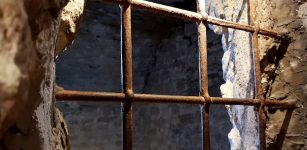 New Study Sheds Light On The Phenomenon Of Female Jewish Slavery And Uncovers Gang Rape In Livorno’s Slave Prison
Archaeology | May 18, 2022
New Study Sheds Light On The Phenomenon Of Female Jewish Slavery And Uncovers Gang Rape In Livorno’s Slave Prison
Archaeology | May 18, 2022 -
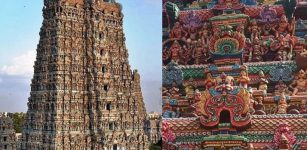 Meenakshi Temple Of Madurai Is Among Most Powerful Sacred Sites For Hindu People
Featured Stories | Apr 29, 2021
Meenakshi Temple Of Madurai Is Among Most Powerful Sacred Sites For Hindu People
Featured Stories | Apr 29, 2021 -
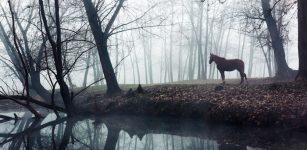 Kelpie – Supernatural Horse-Liked Creature Lures Humans To Death In Scottish Lore
Featured Stories | Dec 29, 2021
Kelpie – Supernatural Horse-Liked Creature Lures Humans To Death In Scottish Lore
Featured Stories | Dec 29, 2021 -
 Susanoo-no-Mikoto – Shinto God Of The Sea And Storms Was Banished From Heaven
Featured Stories | Nov 23, 2018
Susanoo-no-Mikoto – Shinto God Of The Sea And Storms Was Banished From Heaven
Featured Stories | Nov 23, 2018 -
 Never-Before-Seen 3,000-Year-Old Paintings Of Egyptian Goddess Amentet Discovered Inside Coffin Of A Mummy
News | Apr 7, 2020
Never-Before-Seen 3,000-Year-Old Paintings Of Egyptian Goddess Amentet Discovered Inside Coffin Of A Mummy
News | Apr 7, 2020 -
 Mystery Of The Avars Who Conquered The Roman Empire Solved By Scientists
Civilizations | Apr 1, 2022
Mystery Of The Avars Who Conquered The Roman Empire Solved By Scientists
Civilizations | Apr 1, 2022 -
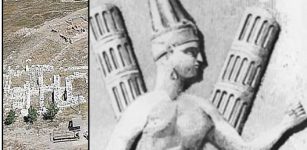 Cuneiform Tablet Unearthed In Hittite City Samuha Refers To Love And War Goddess Sausga
Archaeology | Oct 2, 2023
Cuneiform Tablet Unearthed In Hittite City Samuha Refers To Love And War Goddess Sausga
Archaeology | Oct 2, 2023 -
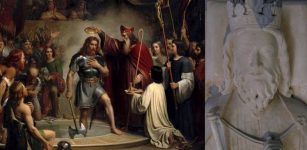 Merovingian Dynasty Of Long Haired Kings
Featured Stories | Jan 18, 2019
Merovingian Dynasty Of Long Haired Kings
Featured Stories | Jan 18, 2019 -
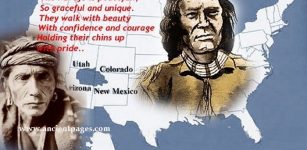 The Navajo People In The Land Of The Four Sacred Mountains
Civilizations | Jun 10, 2020
The Navajo People In The Land Of The Four Sacred Mountains
Civilizations | Jun 10, 2020 -
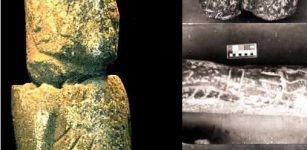 Inscription On Pokotia Monolith Reveals Sumerians Visited Peru Thousands Of Years Ago
Ancient Symbols | Sep 1, 2015
Inscription On Pokotia Monolith Reveals Sumerians Visited Peru Thousands Of Years Ago
Ancient Symbols | Sep 1, 2015 -
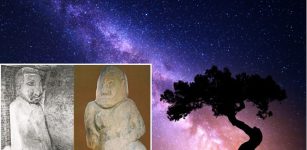 Controversial Stone Statues Of Niulang And Zhinyu And The Legend Of The Heavenly Queen And Milky Way
Artifacts | Sep 8, 2017
Controversial Stone Statues Of Niulang And Zhinyu And The Legend Of The Heavenly Queen And Milky Way
Artifacts | Sep 8, 2017 -
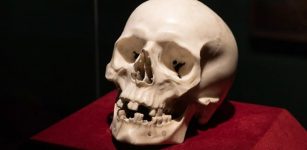 Baroque-Period Marble Skull Analyzed With Standard Forensic Anthropological Techniques
Archaeology | Feb 16, 2022
Baroque-Period Marble Skull Analyzed With Standard Forensic Anthropological Techniques
Archaeology | Feb 16, 2022 -
 Study Of Environmental Conditions Of Early Humans In Europe And The Out-Of-Africa Migration
Archaeology | Sep 8, 2021
Study Of Environmental Conditions Of Early Humans In Europe And The Out-Of-Africa Migration
Archaeology | Sep 8, 2021 -
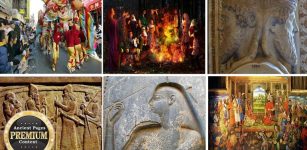 Ancient History Of New Year’s Celebrations And Traditions From Around The World
Ancient Traditions And Customs | Dec 31, 2024
Ancient History Of New Year’s Celebrations And Traditions From Around The World
Ancient Traditions And Customs | Dec 31, 2024 -
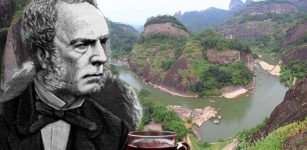 Robert Fortune’s Dangerous Mission To Obtain Tea From The Chinese
Featured Stories | Feb 24, 2020
Robert Fortune’s Dangerous Mission To Obtain Tea From The Chinese
Featured Stories | Feb 24, 2020 -
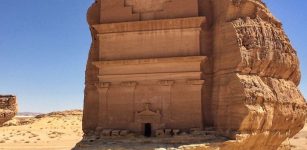 Mada’in Saleh: Magnificent Timeless Rock-Cut Tombs And Monuments In The Desert
Civilizations | Oct 30, 2018
Mada’in Saleh: Magnificent Timeless Rock-Cut Tombs And Monuments In The Desert
Civilizations | Oct 30, 2018 -
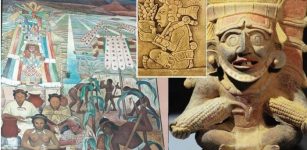 Yum Kaax, Mayan God Of Agriculture, Lord Of Woods And Caretaker Of Animals
Featured Stories | Jul 15, 2020
Yum Kaax, Mayan God Of Agriculture, Lord Of Woods And Caretaker Of Animals
Featured Stories | Jul 15, 2020 -
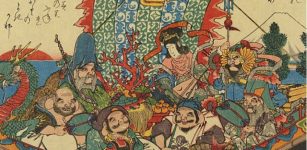 Seven Gods Of Happiness – Bring Luck, Prosperity And Health In Japanese Folk Belief
Featured Stories | Jun 29, 2020
Seven Gods Of Happiness – Bring Luck, Prosperity And Health In Japanese Folk Belief
Featured Stories | Jun 29, 2020 -
 On This Day In History: World War II – Attack on Pearl Harbor – Dec 7, 1941
News | Dec 7, 2015
On This Day In History: World War II – Attack on Pearl Harbor – Dec 7, 1941
News | Dec 7, 2015



